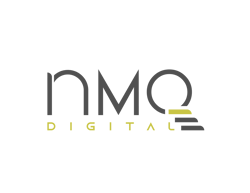Predictive analytics is a data-driven approach used to make predictions about future events or trends based on historical data and current factors. It involves the use of statistical models and algorithms to analyze large amounts of data and identify patterns and relationships. We can say it is a tool to unlock the realms of data and use it strategically to grow your business.
“Consumer data will be the biggest differentiator in the next two to three years. Whoever unlocks the reams of data and uses it strategically will win.”
ANGELA AHRENDTS, Senior Vice President of Retail at Apple Inc – 2019
In today's age of extensive internet usage, the field of marketing encompasses vast amounts of constantly generated content and data, alongside emerging channels and opportunities. Organizations have the choice to embrace these resources and leverage them to comprehend their customers better, leading to enhanced customer satisfaction, business growth, and success.
How Predictive Analytics can help enable predictable growth?
Predictive analytics is one of the available opportunities that can provide organizations with numerous tools and solutions for achieving predictable growth if used strategically. Below are some examples demonstrating how predictive analytics can serve as an efficient marketing tool and benefit organizations.
-
More Efficient Resource Allocation
Predictive analytics can help organizations make informed decisions about where to allocate resources, such as personnel and budget, based on projected outcomes. For example, if the % amount of customers who are about the be churned in a certain time frame can be predicted, some of the marketing efforts can be allocated accordingly to retain these customers. -
Risk reduction
Predictive analytics can help organizations identify potential risks and take proactive measures to mitigate them by reducing the likelihood of negative consequences. For example, if it is known that during a certain promotion, product stocks are 90% likely to be running out of stock, stock allocation can be done accordingly to mitigate this risk. -
Improved customer engagement
Predictive analytics can help organizations understand customer behavior and preferences, allowing them to tailor their offerings and communications to improve customer satisfaction and loyalty by providing personalized content or offers. For example, based on their behavior, if the next product a certain customer is more likely to buy can be predicted, marketers can immediately promote that product at the right time with a personalized offer which will increase the likelihood of the next purchase. -
Better decision-making
Predictive analytics can provide organizations with a more comprehensive view of their data and operations, allowing them to make better decisions based on evidence-based insights. For example, it can help businesses identify customer segments based on their buying habits, preferences, and demographic information, allowing them to target their marketing efforts more effectively. -
Increased efficiency
Predictive analytics can help organizations identify inefficiencies and optimize processes, resulting in improved efficiency and cost savings. For example, it can be used to optimize the timing, frequency, and content of marketing campaigns, increasing their effectiveness and ROI. -
Enhanced fraud detection
Predictive analytics can help organizations detect fraudulent activity by identifying patterns and anomalies in data that may indicate illegal behavior. This might be useful, especially in the banking sector, so that the fraud analyst would review the flagged transaction and take appropriate action, such as contacting the customer to verify the transaction or declining the transaction outright. -
Improved resource utilization
Predictive analytics can help organizations optimize resource utilization, such as predicting equipment failures and maintenance needs, reducing downtime, and improving overall productivity. For example, the data could be used to schedule the right number of workers at the right time to meet demand and avoid overstaffing, which can waste resources and increase costs.
These are only a few samples where predictive analytics can be helpful to predict the future and prepare for it. It is worth mentioning that the benefits of predictive analytics are not only limited to the above samples but are up to organizations to leverage in different use cases.
Needless to say, marketing is not the only domain where predictive analytics can be beneficial for organizations to enable strategic growth. Industries like finance, healthcare, retail, and others can also make use of the power of data and use it to be future-proof. Below are some examples of use cases demonstrating the application of predictive analytics in various industries.
Finance: Predictive analytics can be used for credit scoring, fraud detection, and portfolio management, helping financial institutions make more informed decisions.
Healthcare: Predictive analytics can be used to identify patients who are at risk of developing certain medical conditions, allowing healthcare providers to take preventive measures.
Retail: Predictive analytics can be used to forecast sales and optimize inventory management, reducing the costs associated with stock shortages or surplus inventory.
Manufacturing: Predictive analytics can be used to optimize supply chain management and predict equipment failures, reducing downtime and costs associated with maintenance.
Transportation: Predictive analytics can be used to optimize routes, predict demand, and plan for capacity, improving efficiency and reducing costs.
Naturally, the aforementioned use cases are merely a few of where predictive analytics can be implemented. The potential applications of predictive analytics are vast, and the technology continues to evolve and expand into new industries.
What are the prerequisites of predictive analytics?
While the prospects are undoubtedly thrilling, getting started with utilizing data to forecast the future requires laying a foundation, ensuring that the necessary infrastructure is in place, and feeding the required information in the correct format. The following are some essential prerequisites to keep in mind before initiating the creation of predictive analytics models;
-
Business Problem
Predictive analytics is designed to solve specific business problems, so it is important to have a clear understanding of the problem you are trying to solve and how predictive analytics can help. You might have brainstorming sessions for this in your organization with expert people. -
Data
You will need a large, clean, and well-organized dataset for predictive analytics. This data should be relevant to the problem you are trying to solve and contain a sufficient amount of historical information to establish patterns and make accurate predictions. You might have all the nice ideas around the world, but if you don’t have reliable data, they will just stay as ideas. -
Technical Expertise
Predictive analytics requires a team of data scientists, statisticians, and other experts who have the technical skills and knowledge to use the tools and interpret the results. You will take strategic actions based on these results, so make sure you have the right skillset involved in your organization. -
Analytics Tools
Predictive analytics requires specialized software and analytical tools, such as data mining and machine learning software, to process and analyze the data. You might ask for more guidance from your technical team. -
Model Selection
There are several statistical models and algorithms that can be used for predictive analytics, so it is important to choose the right model for the specific problem you are trying to solve.
-
Validation
Predictive models need to be validated using a test dataset to ensure that they are accurate and reliable. If yes, good for you, if not, then you will need to go back and clean your data in a way that can be used for the model.
Now that you understand the advantages of predictive analytics and the requirements for utilizing it, it's time to take action! If you need any support along the way, NMQ Digital is here to help you with the following;
- Business Problem Idea Harvesting
- IA Success Plan
- Data Exploration
- Business Rule & Model Design
- Building and deploying the model
- Data tracking, measurement, dashboarding, data analysis & insight generation
- Consulting services to assist with end-to-end data structuring and optimal utilization
In summary, data and predictive analytics can be very powerful in strategic decisions and the growth of your business if used in the right way. It can be applied across all industries and NMQ Digital is ready to help with it, from consultancy to execution of any predictive analytics business cases.





